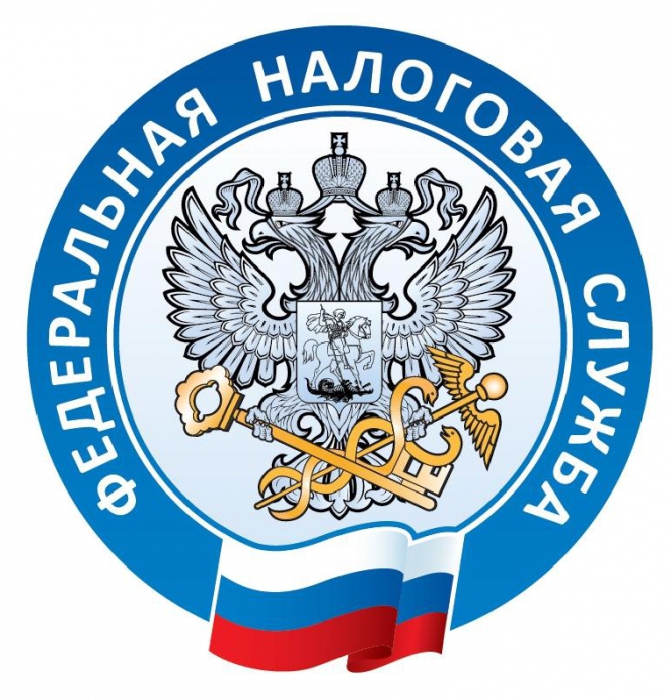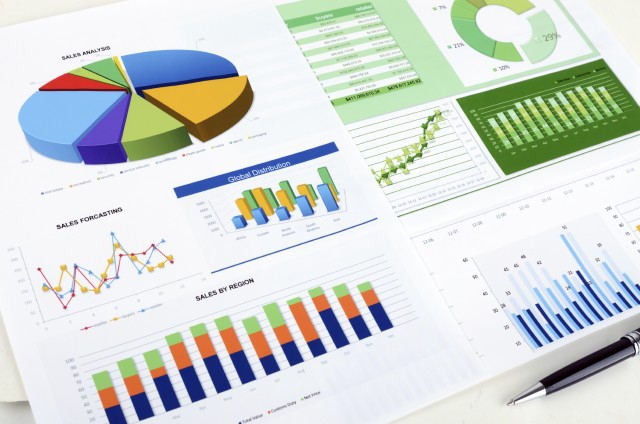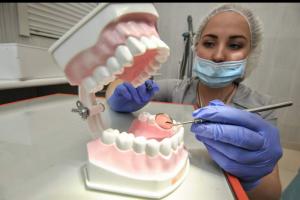Russian enterprises can operate within a wide range of taxation regimes. Among them are both those that are best suited for businesses with low revenue, and those schemes that allow enterprises to have a reasonable payment burden with large profit margins. How to choose the best tax option for a Russian entrepreneur?

General tax regime
The first possible option for settlements between an entrepreneur and the state is a general tax regime. It is considered one of the most burdensome for the payer, as it involves the transfer to the state budget: income tax, VAT, personal income tax, property tax. The considered taxation regime of an enterprise provides for accounting and the provision of tax reporting to the Federal Tax Service. In some cases, the obligations of companies are supplemented by the need to provide information to Rosstat and the FSS.
The main advantage of working under the general taxation regime is that the company will not have restrictions on interaction with legal entities that pay VAT. Another obvious plus is that you do not have to pay income tax if the company is operating at a loss, which can also be transferred to other reporting periods and thereby reduce the amount of payments to the budget in the future.
Additional fees for payers under the general taxation system
If a company operates under the general regime for calculating and paying taxes, in some cases its obligations to the state may be supplemented by the need to pay additional fees. For example, it could be:
- excise taxes regulated by the provisions of Chapter 22 of the Tax Code of the Russian Federation;
- fees for use provided for in Chapter 25.1 of the Tax Code of the Russian Federation biological resources;
- water tax regulated by chapter 25.2 of the Tax Code of the Russian Federation;
- tax on the extraction of natural resources provided for by Chapter 26 of the Tax Code of the Russian Federation.
Other payment obligations of firms operating under the simplified tax system may be related to the payment of regional fees. Among those:
- transport tax, regulated by Chapter 28 of the Tax Code and legal acts adopted in the constituent entities of the Russian Federation;
- property tax established by Chapter 30 of the Tax Code of the Russian Federation, as well as regional laws.
The main taxation regime also involves the payment, in cases stipulated by law, of the local land tax. It is governed by the provisions of Chapter 31 of the Tax Code of the Russian Federation, as well as municipal legal acts.
Simplified mode
Many enterprises choose a simplified tax regime. It has such a name, firstly, due to the fact that with it the company's payment obligations to the state become less (no need to pay income tax, VAT and personal income tax), and secondly, reporting requirements are not set so strict.
In order to be able to choose the taxation regime in question, an enterprise must meet a number of criteria. Firstly, the number of employees should not exceed 100 people. Secondly, the cost of fixed assets of the enterprise should be no more than 100 million rubles. Thirdly, for organizations applying for work under the simplified tax system, there is a limit on annual revenue - the corresponding amount is 68,820,000 rubles in 2015.

Can not work on the simplified tax system:
- banks;
- insurance companies;
- investment funds;
- NPF;
- trading companies;
- pawnshops;
- companies with representative offices or branches;
- mineral mining businesses;
- organizations involved in the production of excisable products;
- gambling business;
- lawyers, notaries;
- firms that have signed production sharing agreements;
- a legal entity, the share of which is more than 25% owned by budgetary institutions.
The main advantage of the simplified tax system is low tax rates. There are 2 ways to calculate an enterprise with the state:
- transfer of fees on revenue at a rate of 6%;
- income tax in the amount of 15% of the corresponding indicator.
At the same time, there are also disadvantages of the simplified tax system. Among these: in some cases, it is problematic to conclude contracts with firms that have chosen a general tax regime. The fact is that the counterparty will not have legal grounds for receiving VAT deductions, the value of which can be very significant for him.
How to switch to the simplified tax system
How to switch to STS entrepreneur? There are two main schemes for solving this problem.
Firstly, if a person is already doing business and decided to switch to the simplified tax system, then by December 31 of the year preceding the time when the company’s work on the simplified tax system is desirable, he needs to send a notification in the established form to the territorial division of the Federal Tax Service. In this document, the residual value of fixed assets, as well as the amount of revenue as of October 1, should be recorded.
Secondly, an entrepreneur can switch to the simplified tax system immediately after registering a business with the Federal Tax Service. In this case, he can send a notification to the tax service at the same time as filing the registration documents or within 30 days after the completion of the relevant procedure.

It can be noted that the payer, who switched from the simplified tax system to a different taxation scheme, will be able to return to the “simplified system” after having worked for at least 1 year according to another scheme.
Advantages of USN for IP
Separately, it is worth noting that individual entrepreneurs working under the simplified tax system have the following advantages: no need to pay personal income tax, not including fees that are listed with:
- interest income on bank deposits;
- savings on credit rates;
- dividends;
- tax on property of individuals (for objects used in entrepreneurial activities).
IP, however, are not exempted from the obligations stipulated by the status of a tax agent.
UTII
Another common tax system is UTII. It involves the payment of a single imputed tax in a fixed amount, which is determined by the state. Its main advantage is that the size of the business’s revenue does not matter. The company can work on UTII only if it is engaged in certain types of activities. Among those:
- the provision of domestic services to citizens;
- the provision of services related to the maintenance, repair and washing of vehicles;
- the provision of transport services;
- the provision of buildings and residential premises for rent, the hotel business (if the sleeping area is not more than 500 square meters for each object);
- public catering;
- retail;
- provision of paid parking lots.

There are also a number of restrictions on the use of UTII. So, this taxation regime cannot be applied:
- firms that provide catering services in schools, hospitals, social assistance institutions;
- Individual entrepreneurs who work according to a patent within the same type of activity that is provided for by UTII;
- firms employing more than 100 people;
- companies in which more than 25% belong to other organizations;
- the so-called largest taxpayers.
Also, the right to use UTII by the company is lost if it ceases to conduct activities that fall under this taxation regime.
UTII advantages
Entrepreneurs, considering preferential tax regimes relative to DOS, often choose UTII, as this scheme is characterized by a number of advantages. Consider them.
Firstly, for UTII, as well as for the simplified tax system, a simplified reporting procedure has been established for the Federal Tax Service - provided that the firm does not conduct activities falling under the DOS. So, the structure of the UTII tax return is very simple - it has only 5 pages. Filling them out does not imply much difficulty for businesses, since the bulk of the indicators that are recorded in the document are determined by law.
Secondly, correction factors are used in the structure of determining the tax base at UTII. Their value allows you to take into account various factors affecting income and the amount of tax. For example, the K2 coefficient takes into account seasonality, mode of operation, as well as the specifics of the geography of the entrepreneur.
Thirdly, UTII involves accounting for work within the actual period of its implementation. For example, the K2 coefficient can be changed if the payer has been in business for a shorter period than the reporting period. The corresponding indicator is adjusted if the entrepreneur, for any objective reason, did not carry out activities.
UTII - voluntary or mandatory?
An important nuance regarding the application of UTII is that this tax has been voluntary since 2013, and in previous periods the company should have worked on it if the type of activity met the criteria for this fee. Now, a company that carries out activities for which UTII can be applied must notify the Federal Tax Service if the relevant activities are core.
Unified agricultural tax
The legislation of the Russian Federation may provide for special taxation regimes for entrepreneurs operating in specific segments. For example, for farmers who can take advantage of the opportunity to make settlements with the state by paying a single agricultural tax or USCH. Agricultural producers who have chosen this taxation scheme are exempted from the need to pay:
- income tax;
- VAT;
- property tax.
If the farmer is registered as an individual entrepreneur, then he does not have to pay personal income tax, personal property tax. As in the case of the simplified tax system, payers of the unified social tax have to fulfill the obligations stipulated by law for tax agents.
Patent system
Special tax regimes of the Tax Code of the Russian Federation also include the patent system. What is its specificity?
The patent system involves the payment of tax in the amount, which is determined as potentially possible for the corresponding type of activity. The criteria by which this indicator is calculated are established by the Tax Code of the Russian Federation, as well as regional legal acts. It can be noted that, at the same time as the patent system, a company may apply other taxation regimes that are provided for by the legislation of the Russian Federation.

Taxable period within the framework of the considered scheme of settlements with the state - the calendar year or the period of time in which the patent is valid. The tax rate on the patent system is 6%. The actual amount of payment is also calculated taking into account the tax base, which is determined in accordance with the criteria established in article 346.51 of the Tax Code.
If the patent is less than a year, then the tax is calculated in proportion to the ratio of the number of months of entrepreneurial activity to 12 months of the full period. A person who uses the taxation system under consideration has the right to hire other citizens, but the company should not have more than 15 people.
The patent scheme of settlements with the state gives the entrepreneur the right not to pay:
- Personal income tax;
- personal property tax (which is used in business);
- VAT.
If a person also works on other systems for calculating fees - we noted above that along with the patent any other taxation regimes may be involved - then the obligations established by the legislation of the Russian Federation for such schemes should be fulfilled.
It can be noted that since 2013, the patent system can work in such areas as: retail (if the hall area is not more than 50 sq. M for each object) and catering (similarly, if the area of each room does not exceed 50 sq. M) , that is, in those segments that may also fall under UTII. Subjects of the Russian Federation may establish additional lists of entrepreneurial activities that relate to household services, and for which businesses can operate within the framework of the patent system.
How to choose the best taxation scheme
So, we examined the main taxation regimes that are provided for by the legislation of the Russian Federation. How to choose the best?
When solving this problem, it is recommended to pay attention to the following criteria:
- ratio of revenue and expenses;
- income generating intensity;
- expected business growth prospects.
Of course, certain taxation regimes of organizations, due to legislative requirements, may have no alternative. For example, if a large staff of employees has been formed at the enterprise, then it will work only within the framework of those regimes that can be applied with an appropriate number of employees. Similarly, according to the criteria of revenue, residual funds, etc. Let us consider the above points, which, by the way, are not associated with possible legislative restrictions, in more detail.
The choice of tax system: the ratio of revenue and expenses
The first criterion that may be important when choosing the optimal taxation scheme is the ratio of the company's revenue and expenses. Simply put, the level of business profitability. There are areas of entrepreneurial activity, which are characterized by very high turnovers, but the profitability of the respective segments is low - within a few percent. This may be a segment of construction, retail, catering.

For organizations operating in the relevant segments, it will be most profitable to pay tax on the difference between income and expenses or a certain fixed fee that does not depend on the amount of revenue. In the first case, it is optimal for the company to choose a simplified tax system with a rate of 15% accrued on profit; in the second scenario, it is best to work on UTII.
In turn, in many business segments the revenue may not be so great, but profitability is high, calculated in tens of percent. In this case, the optimal taxation regimes are those that involve the payment of a small fee, calculated on the basis of the organization’s revenue. Most likely, these will be the simplified tax system and the unified social tax.
Revenue Intensity
Another significant criterion that entrepreneurs can take into consideration when choosing the optimal tax system is the intensity of revenue. There are business areas in which revenues can be large, but unstable. In this case, it is best to work according to a scheme that involves the calculation of fees from actual revenues to the account of the enterprise. The optimal income taxation regimes in this case are the simplified tax system or the DOS (if the scale of the business does not allow the first regime to be used). In turn, if the intensity of revenue is more or less uniform, then it may be more profitable for the company to work by paying fixed fees to the treasury. In this case - this is UTII.
Choice of tax regime: business growth potential
The potential for business growth is an equally important criterion for choosing the optimal taxation scheme. The fact is that, due to the specifics of Russian legislation, enterprises do not always have the opportunity to frequently change the methods of settlement with the state. As a rule, if a company began working in a calendar year according to a certain pattern, switching to other types of taxation regimes before the next period will be problematic.Therefore, starting an entrepreneurial activity in a calendar year, one should calculate what the potential for business growth is.
If a large revenue is expected by the end of the year, then perhaps starting an activity makes sense already according to the scheme that involves the payment of fixed fees (UTII). The criterion under consideration also correlates with factors such as seasonality. It happens that in a particular area of entrepreneurial activity in summer, revenue is higher than in winter. Knowing such patterns, the owner of the company can adapt the applicable tax regime to the seasonal factor.
Summary
So, we examined the basic schemes by which Russian entrepreneurs can fulfill obligations to the budget. Russian legislation provides for very comfortable taxation regimes that do not involve a large payment burden. In this sense, the Russian Federation is among the most attractive states for entrepreneurs, especially for beginning businessmen.

The taxation regimes that we have examined in some cases facilitate not only the payment burden on the business, but also reporting procedures. Entrepreneurs interact with the state not only in the aspect of financial obligations, but also in the context of fulfilling the necessary formalities. In this sense, it will also be easier for novice businessmen to start communication with government agencies - when using special taxation regimes, which are characterized by the simplicity of reporting procedures.
There are certain nuances regarding determining which tax regime is appropriate for a particular business. However, we examined criteria that are quite useful from the point of view of choosing one of the budget settlement schemes.








